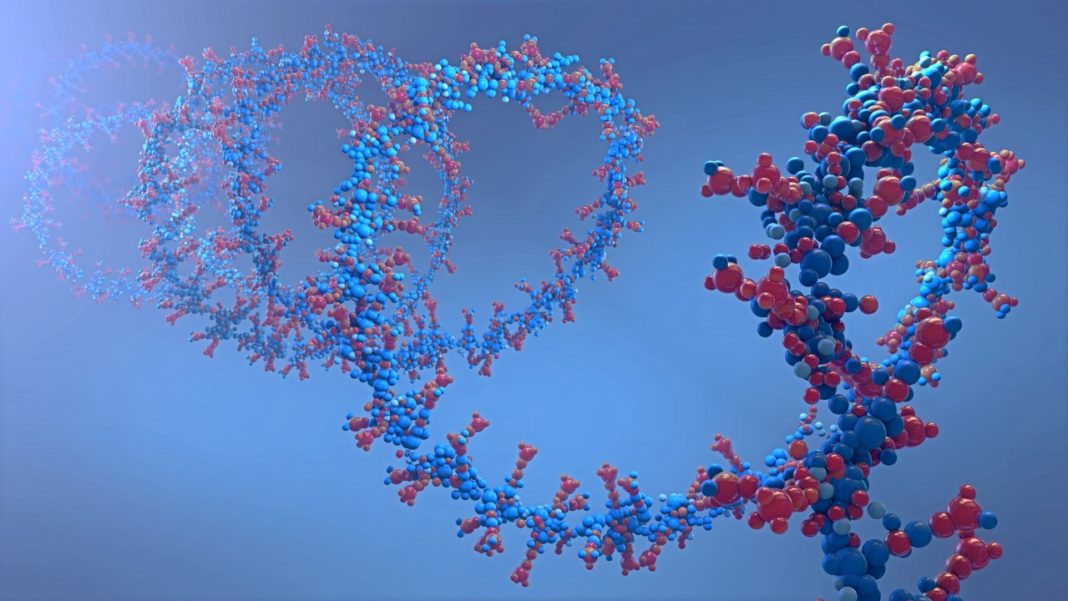When RNA malfunctions, it can result in cancer and developmental disorders. Our cells have molecular “machines” that keep RNA “in check” and eliminate RNAs at the right time. Most come equipped with a “motor” to generate the energy needed to untangle RNA molecules. But one enzyme, Dis3L2, can unwind and destroy RNA molecules on its own. However, this process is not fully understood. Now, scientists from Cold Spring Harbor Laboratory (CSHL) report they have exposed Dis3L2’s secret.
The researchers discovered that Dis3L2 changes shape to unsheathe an RNA-splitting wedge.
The findings are published in Nature Structural & Molecular Biology in an article titled, “A shape-shifting nuclease unravels structured RNA.”
“RNA turnover pathways ensure appropriate gene expression levels by eliminating unwanted transcripts,” wrote the researchers. “Dis3-like 2 (Dis3L2) is a 3′–5′ exoribonuclease that plays a critical role in human development. Dis3L2 independently degrades structured substrates, including coding and noncoding 3′ uridylated RNAs. While the basis for Dis3L2’s substrate recognition has been well characterized, the mechanism of structured RNA degradation by this family of enzymes is unknown. We characterized the discrete steps of the degradation cycle by determining cryogenic electron microscopy structures representing snapshots along the RNA turnover pathway and measuring kinetic parameters for RNA processing.”
Using molecular imaging technology, CSHL professor and HHMI investigator Leemor Joshua-Tor, PhD, and her team captured Dis3L2 at work. They fed the molecular machine hairpin snippets of RNA and imaged it getting “eaten” at various stages. After the machine had chewed up the tip of the RNA, it swung open a big arm of its body to peel apart the hairpin and finish the job.
“It’s dramatic,” Joshua-Tor said. “We know things change conformation. They buckle. But opening something out like that and exposing a region in this way—we didn’t quite see something like this before.”
Joshua-Tor’s team then began tinkering with the Dis3L2 machine, searching for the gears and parts enabling it to unwind and destroy RNA. The researchers narrowed it down to a protruding wedge left unsheathed after the machine shifted shapes. If the researchers removed the wedge, Dis3L2 could no longer untangle the RNA hairpin, putting the machine out of commission.
This new finding may help scientists develop better treatments for diseases and disorders caused by RNA mutations. “We have to start thinking about these things as much more dynamic entities,” Joshua-Tor said, “and take that into account when we are designing therapeutics.”







